'Phenomenal boon': How Nevada's signature public lands law ushered in growth, conservation

Editor’s Note: This story is part of a two-part series on the history of public lands management in Nevada. To see the other story, which focuses on Nevada’s unique lands bill process and what the future holds, click here.
Before it became Sin City, Southern Nevada was once home to more than 2,000 acres of wetlands created by the Las Vegas Wash — an urban watershed that returns excess water from the Las Vegas Valley to Lake Mead. It was a stopping point for migratory birds and boasted rich biodiversity.
But as Las Vegas grew, the wash’s natural capacity to filter the city’s water and support the fragile desert ecosystem dwindled. By the 1990s, the wetlands shrunk to one-tenth of their previous size.
But in 1998, the Southern Nevada Public Land Management Act (SNPLMA) passed out of Congress.
The bill drew a new boundary around the Las Vegas Valley, identifying public lands to be sold at auction to private bidders while providing for the acquisition of environmentally sensitive lands for conservation protection. In a wholly unique twist, SNPLMA directed the profit generated from the federal land sales to remain in Nevada, rather than be deposited into the U.S. Treasury’s general fund.
The proceeds from these sales have generated more than $4 billion in revenue.
Outside of Nevada, the bill has proven rather obscure — a clunky acronym (pronounced “snip-la-ma”) that does not exactly roll off the tongue and whose significance isn’t typically grasped outside those who have made a career out of land management policy. But in Nevada, SNPLMA has invested billions of dollars in the state and powered growth throughout the region, while critics have charged that it has enabled suburbanization and sprawl, straining already-precarious water resources.
For the Las Vegas Wash, SNPLMA funds have driven the restoration of wildlife habitat, the removal of 60 percent of the sediment from the water, and erosion control to keep sediment out of Lake Mead.
SNPLMA profits have also funded conservation efforts across the state, as well as Nevada schools, the creation of parks, trails and habitat protection areas across Clark County, including for the endangered Moapa dace at the Warm Springs Natural Area in Moapa. Additionally, SNPLMA sales proceeds have funded more than $347 million for the Southern Nevada Water Authority (SNWA) — an agency tasked with protecting and enhancing the Las Vegas Wash — and upgrades to Clark County’s water treatment facilities, new pumping stations and pipelines, among other priorities.
But all of those conservation projects may never have occurred had politicians outside of Nevada realized the scale at which SNPLMA could operate.
That unknown of just how much money the law would generate likely contributed to its uncontroversial passage — and, thus far, its lack of replication in other states. SNPLMA passed by a voice vote under suspension of the House rules in April 1998, and then through the Senate by unanimous consent.
The bill’s sponsor, former Sen. Richard Bryan (D-NV), agreed, saying that part of the successful argument his team made was that “we’re not talking about a lot of money here.”
The provision keeping the funds in Nevada flew under the radar — but ended up being what made the law so consequential.
“It wasn't an afterthought, but it was something that I kind of just wrote into the bill,” Brent Heberlee, a Bryan staffer, said. “It was like three words that meant everything.”
No other state has negotiated a similar agreement to ensure funds from land sales go to a state-specific account for exclusive use.
“I think if folks realized what a big impact it would have, both in the Las Vegas, Clark County area as well as Tahoe and the other parts of the state that SNPLMA touches, it may not have passed,” said Bradley Crowell, a former state Department of Conservation and Natural Resources (DCNR) director who worked for Bryan after the bill’s passage.
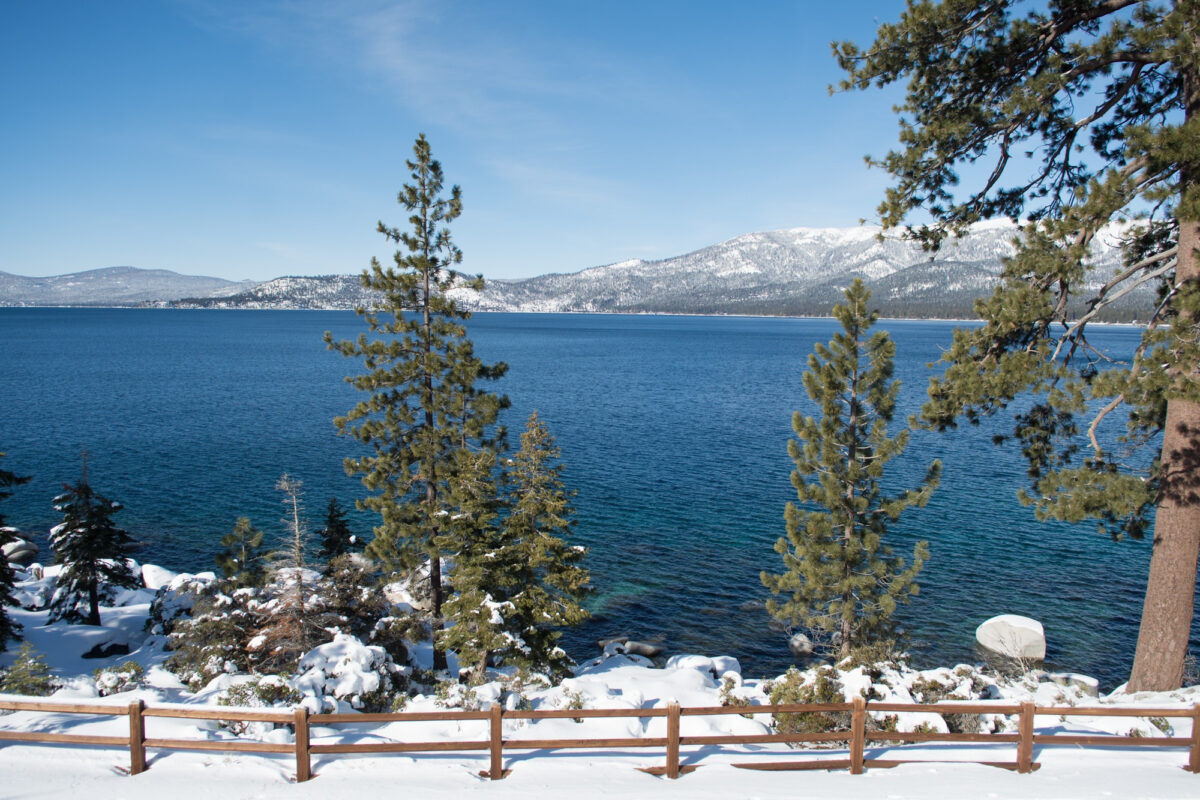
SNPLMA created a grand bargain for Nevada lands policy that the delegation still uses as a model today. The act created a “disposal boundary” of public lands in Clark County that can be sold at auction to the highest bidder.
The $4 billion generated has, in a unique twist specific to SNPLMA, remained in Nevada — 5 percent goes to the state general education fund, 10 percent to SNWA, and the remaining 85 percent to a special Department of Interior account to fund things such as conservation initiatives, environmental land acquisitions, new parks and trails, and environmentally focused capital projects, mostly in Clark County but in the Lake Tahoe area and some rural counties as well.
By mid-2023, 19 rounds of auctions have been held, and about 40 percent of the nearly 68,000 acres made available in the disposal boundary between SNPLMA, the subsequent 2002 Clark County lands bill, and further congressional technical updates have been sold, leased, reserved by local governments, or otherwise disposed of. The BLM maintains a full accounting of projects funded by SNPLMA.
The sales have ranged from small parcels sold for $18,000 to a 2006 auction that yielded $639 million. These previously public plots have become master-planned communities, including Mountain’s Edge in Enterprise, or transformed into schools and library districts when sold at low cost to local governments.
On the other side of the ledger, those 85 percent of funds can go toward several project categories that can be seen all over the state — the development of Centennial Hills Park in Las Vegas, the implementation of habitat conservation plans for dozens of species in Clark County, the cleanup of Battleship Wash stream near Moapa, and erosion control initiatives in Lake Tahoe.
“It's just been a phenomenal boon to really accentuate [and] highlight the natural beauty of Nevada,” Sen. Jacky Rosen (D-NV) said.
Not everyone agrees, of course — particularly in an environmental community split over the landmark law’s conservation benefits and sprawled-out growth pattern it has enabled.
“This pattern of development — selling off public lands so we can just sprawl and sprawl — is sort of universally recognized as problematic,” Patrick Donnelly, the Great Basin director for the Center for Biological Diversity said. “Las Vegas is the poster child for how not to develop.”
Furthermore, that growth has not always been stable — the run on land sputtered during the Great Recession, meaning agencies that receive SNPLMA funds (like SNWA) cannot necessarily plan for consistent help in their annual budgets, said Pat Mulroy, the agency’s former director.
But 25 years later, SNPLMA remains an incomparable boon to the state and fiercely defended by its congressional delegation, on both sides of the aisle. Rep. Mark Amodei (R-NV), whose Northern Nevada-based district receives Tahoe restoration funds as enumerated in the original bill and who has made land policy his signature issue for over a decade, holds the law in the highest possible regard.
“[In] my opinion,” Amodei said in an interview: “[it is] the most successful public lands legislation in the history of the country.”
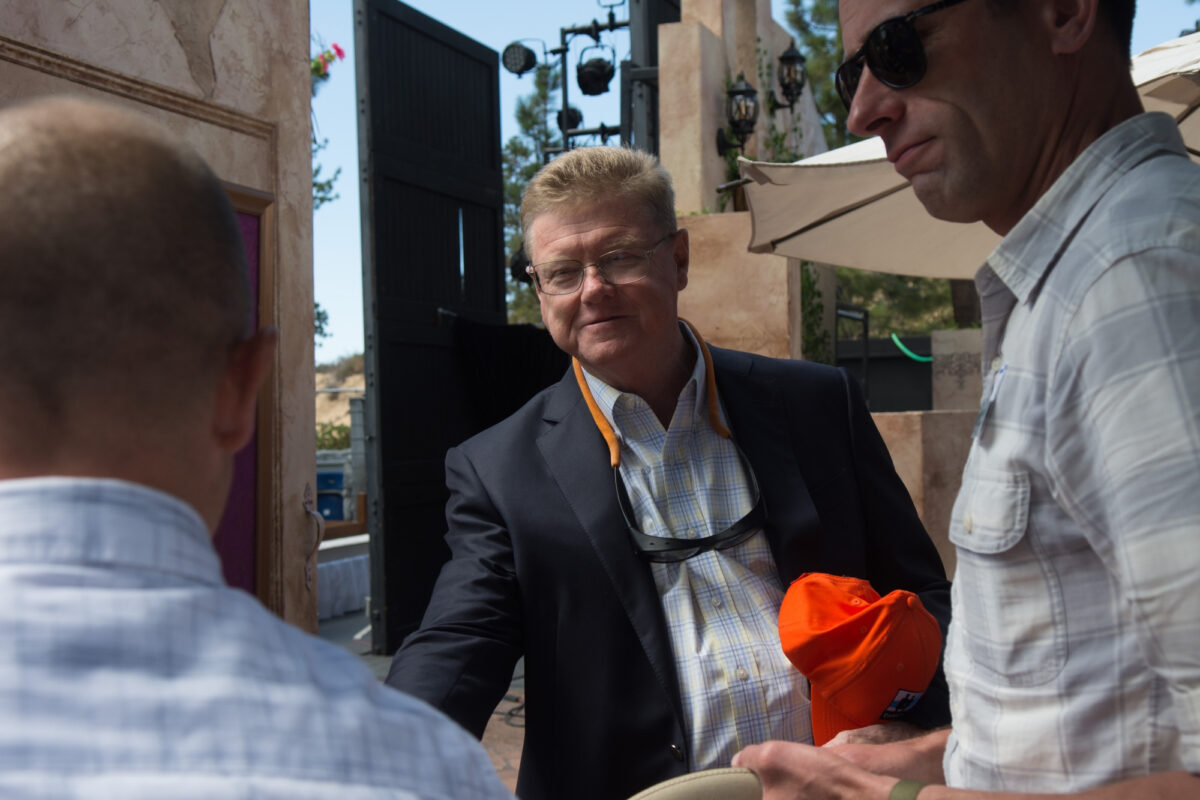

When SNPLMA first passed — via unanimous consent in the Senate — neither most Nevadans nor other politicians had a grasp on what it would become. Developers and conservationists alike had agreed there was a need to standardize what had become a Wild West of federal land exchanges, in which valuations for swaps seemed to favor developers.
In Nevada, more than 80 percent of the land is federally owned. Growth, therefore, often requires federal intervention via an act of Congress or a BLM policy in order to make land available for development, rather than the traditional sales or zoning decisions used by other states.
Prior to SNPLMA, if a developer wanted to acquire a specific parcel of public land, they would trade another property to the federal government that had some environmental value for conservation. But the trades weren’t always fair, and would often be characterized as “sweetheart deals.” These allegations got particularly loud during the development of Summerlin in the 1990s, on the border with Red Rock Canyon.
Given how quickly land was appreciating during Las Vegas’ boomtown growth era, a parcel’s value would have already increased significantly by the time a sale was finalized.
The disputes occasionally even embroiled the delegation and the BLM.
Pat Shea, who served as the agency’s director in 1997, recalled several phone calls from then-Sen. Harry Reid (D-NV) over blocked conveyances and land shufflings at the Las Vegas office.
“Mormons don't swear,” Shea said, referring to Reid’s religious affiliation. “But when they get really mad, they get really creative in how they combine different profanity. Reid was giving me newly created profanity, and all I could do was say yes, senator or no, senator.”
Another common complaint — proceeds from those federally owned Nevada land sales would become federal revenue and not necessarily stay in Nevada.
“It infuriated me that the federal government saw Nevada as this cash cow,” said Mulroy, who recalled calling up Bryan to share this complaint. “They would sell off land in Southern Nevada, giving us all the cost and expenses of servicing that land and supporting that land, and they took the proceeds from the sale and expended them in Montana, Wyoming and all over for somebody’s pet conservation project.”
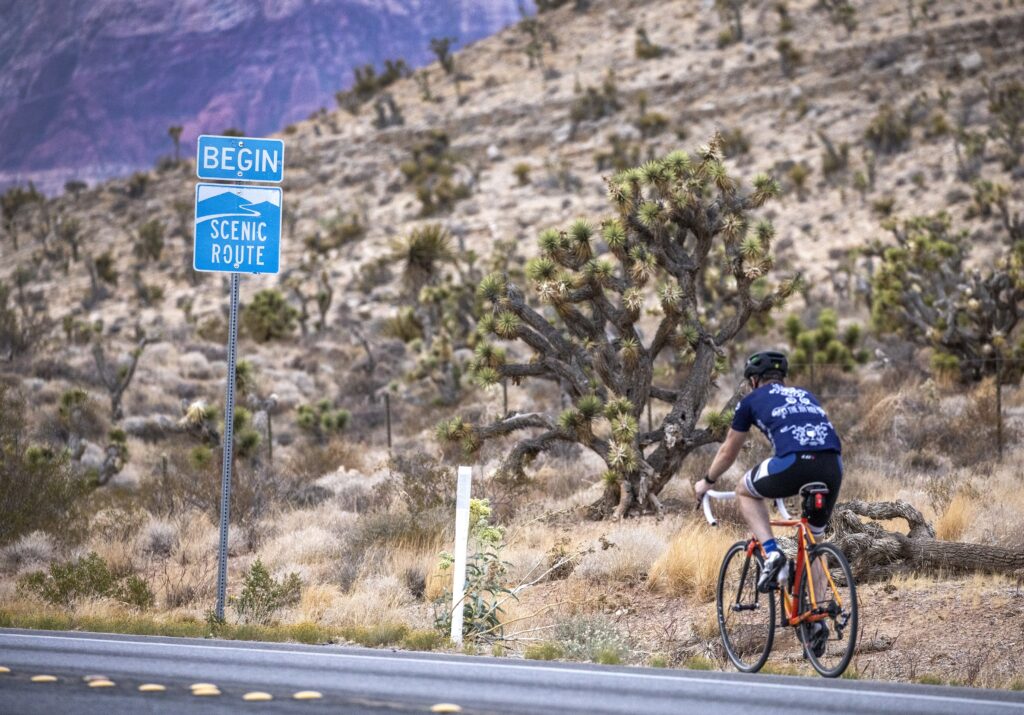
The desire to standardize land swaps coincided with the end of Bryan’s congressional career. Bryan, who retired in 2000, saw a landmark lands law as both a potential legacy builder and a massive conservation effort for a senator who had made that one of his hallmark issues, staffers said.
In an interview, Bryan credited Heberlee, a staffer in former Rep. Jim Bilbray (D-NV)’s office who had initially begun working on a land-swap proposal in the early ’90s. After Bilbray lost his seat in 1994, Heberlee came to work with Bryan and brought his ideas with him, including the model of the 1980 Santini-Burton Act, which opened up some public lands in Clark County for development in exchange for environmental acquisitions in the Tahoe Basin.
Bryan was skeptical of whether a political coalition of developers, local governments and environmentalists would ever emerge to support what would become SNPLMA.
“I said, are you kidding me?” Bryan said. “You can't get all these groups to agree to the time of day the sun rises and sets.”
Heberlee, who, in an interview, said it “took awhile” to sell Bryan on the idea, engaged in months of meetings to settle on a disposal boundary map for Clark County.


In the initial SNPLMA proposal, sale proceeds would have been split 50-50 — half going to the Department of the Interior and the other half going to SNWA, schools and Clark County.
Once the bill was drafted, Bryan had to make the case to the Clinton administration and then-Interior Secretary Bruce Babbitt that the funds should go toward Nevada projects. It helped that Bryan knew Babbitt, the former governor of Arizona, from the 1980s when they were both governors of their respective states.
“When we first talked to Babbitt, he said, ‘Are you kidding?” Bryan recalled. “‘Why shouldn't all the money go to the department?’ And Brent was just terrific, and made the point that those parcels aren't worth a whole lot unless they're developed, and water and other essential services are done by the local government entity.”
Eventually, they settled on the 85-15 split that persists today — an arrangement that Heberlee said helped keep Babbitt’s attention away from the creation of a permanent fund ensuring all proceeds were spent in Nevada.
“When Babbitt saw that [50-50 split] at first, he kind of freaked out,” Heberlee said. “He pushed back really hard, [but] … we wanted him to focus on that and not so much some of the other stuff that we knew he probably also would object to.”
With Babbitt’s support, the final obstacle was the congressional appropriations committees. In that respect, SNPLMA was helped by a Congressional Budget Office report that majorly undervalued the law, estimating it would generate $350 million in five years. (The law hit the $1 billion mark within seven years.)
That helped appropriators look the other way.
“They had no clue about what was going on in the real estate market,” Heberlee said.
SNPLMA was introduced in 1996, during Ensign’s first term. It could have passed then, too, Heberlee said, if not for the political machinations of Reid — who, determined to defeat Ensign, quietly killed the bill in the Senate to keep the Republican from notching a political victory.
But when Ensign easily won his 1996 re-election, Reid relented and it became water under the bridge — especially because, Heberlee noted, the land values had another two years to appreciate.
From a conservation perspective, the parcels made available for disposal (transfers to local governments or sale at auction) were essentially urban or close enough to urban areas that they had little natural resource or habitat value, said Bret Birdsong, a public lands expert and law professor at UNLV.
“The BLM didn't have great interest in continuing to manage those parcels, but there was not really a convenient or good way to privatize those parcels,” he said. “And so SNPLMA was sort of designed to solve that problem.”
Under SNPLMA, local governments can nominate parcels within the boundary for disposal. Those parcels then go under environmental review by the BLM on the front end, rather than putting the compliance costs on the purchaser. If approved, the land is then sold at auction.
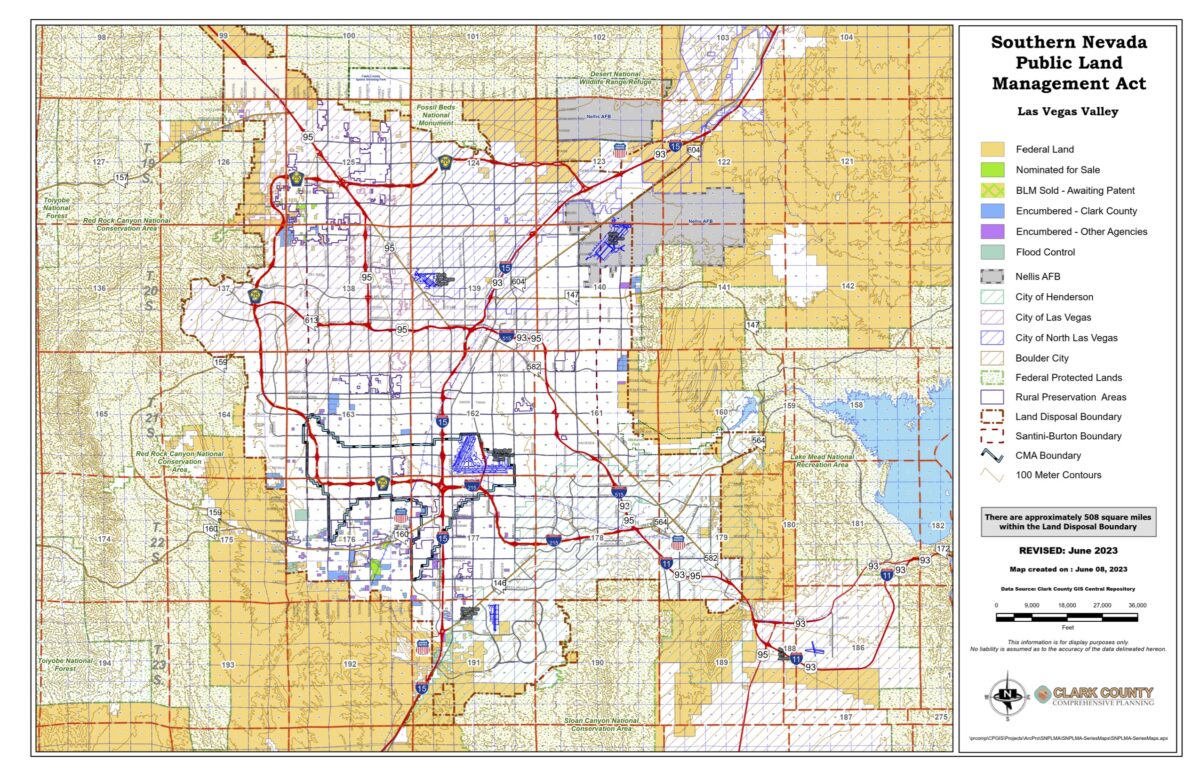
Shea said the law’s novel process required adjustment. The agency’s land appraisers underwent special training, and casino magnate Steve Wynn helped create a cooperative relationship between the agency and prospective bidders. The state office led the way in creating an orderly process for the auctions — and then it was off to the races.
Bryan staffers recall thinking SNPLMA would be a big deal for the state — but the initial results from the first few auctions quickly surpassed their estimations.
“The way that this was expected to operate, it's going to generate a lot of funds,” said Dominique Etchegoyhen, who worked for Bryan after the passage of SNPLMA and is now the deputy director of DCNR. “I just don't think we expected that it would generate this many.”
As SNPLMA celebrates its 25th birthday, the Nevada delegation is looking to defend and potentially expand it.
The law has occasionally come under question from other lawmakers about whether the billions of dollars generated from federal land sales belong in Nevada. These funds could have been used to pay down the national debt or for various social programs. Subsequent Nevada lands bills stipulated a different structure — going to a BLM account for agency projects in Nevada.
“Quite often under previous administrations, both Republican and Democrat, they always want to scoop some of that money out,” Sen. Catherine Cortez Masto (D-NV) said in an interview. “And there is a fight, and always will be a fight.”
But the delegation — understanding the political appeal to Nevada voters of keeping billions of dollars flowing into the state — have been successful in staving off attempts to slash it.
“SNPLMA is the most successful program in the history of Nevada, investing literally billions of dollars into our state’s economy toward public works projects as well as restoration and conservation efforts,” Reid said in 2014.
Birdsong said Reid’s political clout helped keep the law — and its grand balance — intact.
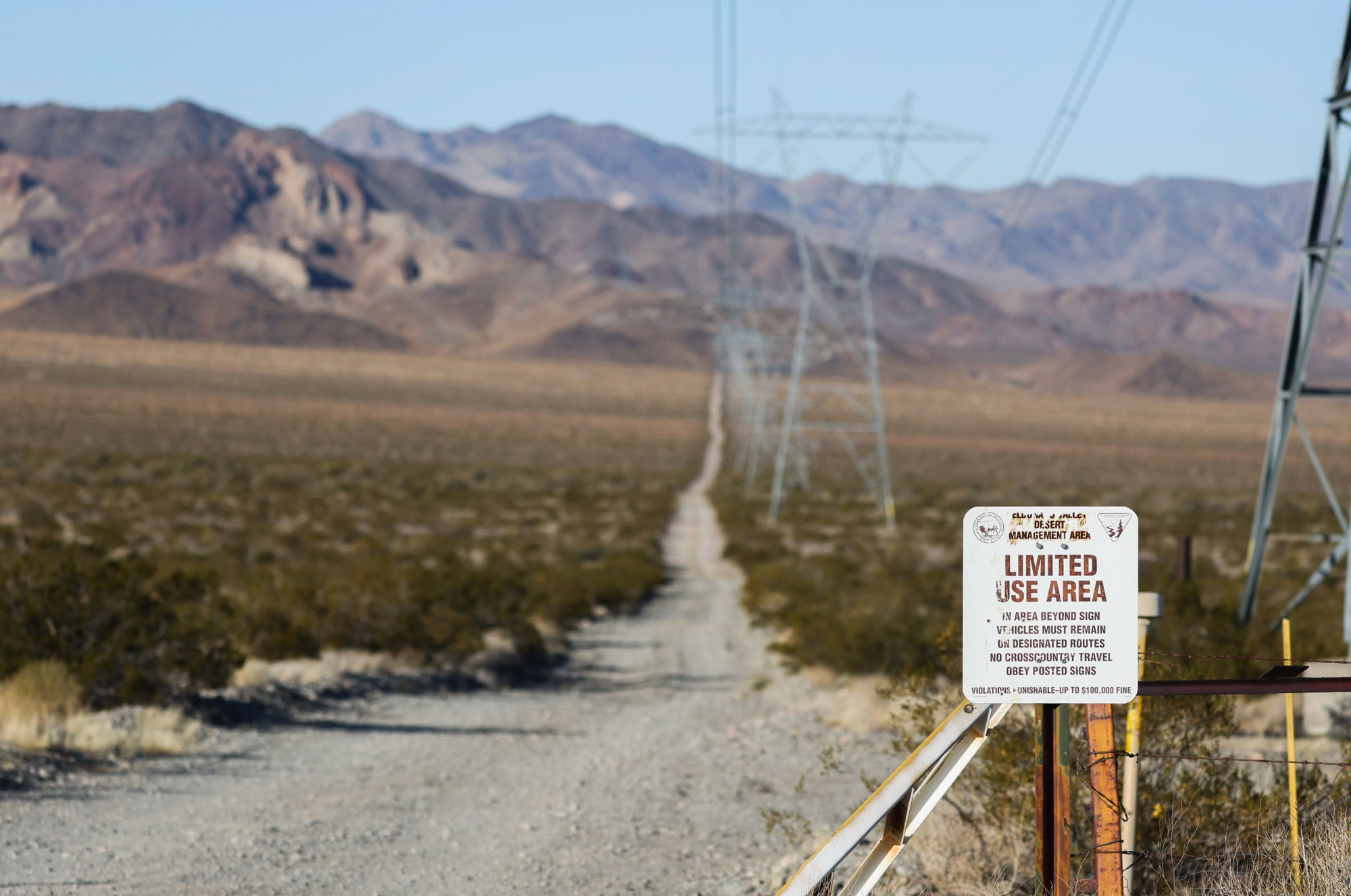
Today, Amodei said he makes a planning-based argument. The growth that SNPLMA facilitates needs to be accompanied by earmarked funds that stay in Nevada for the services that new communities require — “streets, sewer, water, public safety, schools, health,” Amodei said.
He added that there can often be suspicion of any initiative taken on by Reid, but argues that the transparency around SNPLMA sales and initiatives is helpful.
“If you go through and look at what SNPLMA monies do, it's like, hey, none of them are to build Harry Reid's universal college of goodness and kindness,” he said.
As it stands, SNPLMA is a standalone mechanism, protected from the financial whims of Congress.
“That was sort of genius from a financial perspective,” Birdsong said. “SNPLMA kind of short-circuited the appropriations process, and [it was] determined upfront [that] all this money is going to be used for various purposes.”
Support for SNPLMA isn’t universal — some critics say it incentivized sprawl in the Las Vegas Valley. Shea, the former BLM director, said he still thinks it permitted sweetheart deals.
“It was my personal opinion, then and now, that the good man from Searchlight, Nevada, was [permitting] property, to be either directly or indirectly, [and] particularly to family members, [taken] from … the people’s land, in a way that I considered to be improper,” Shea said.
As it moves into its next 25 years, efforts are now underway to expand the disposal boundary through another Clark County lands bill in Cortez Masto’s office.
But given the size of the receipts it generates and the specific growth it was reacting to, experts say another SNPLMA, for a different Western city, is unlikely.
“There’s definitely some places that could potentially do it, but the zeitgeist of this happening in the late '90s, when Vegas was booming, and you had a process of making it easy to develop smartly around the valley that also was raising boatloads of money for conservation — I don't know if that model can just be replicated,” a former Reid staffer said.
